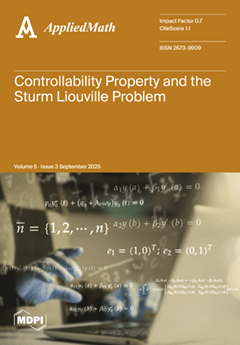AppliedMath, Volume 5, Issue 3 (September 2025) – 52 articles
The Sturm–Liouville problem was initially addressed by the celebrated French mathematicians Jacques Charles François Sturm (1803–1855) and Joseph Liouville (1809–1892) for second-order linear ordinary differential equations of the following form:
ddx[p(x)dydx] + q(x)y = −λw(x)y (p(t)y′(t))′ + (q(t) + λω(t))y(t) = 0
which is subject to certain boundary conditions on a closed finite interval. The values of λ, said to be the eigenvalues of the problem are unspecified in the equation and have to be found in such a way that the above differential equation has a non-trivial solution satisfying the boundary conditions. This research focuses on the replacement of the λ-parameter by a control function to be synthesized in such a way that the prescribed two-point boundary conditions are satisfied. View this paper
- Issues are regarded as officially published after their release is announced to the table of contents alert mailing list.
- You may sign up for e-mail alerts to receive table of contents of newly released issues.
- PDF is the official format for papers published in both, html and pdf forms. To view the papers in pdf format, click on the "PDF Full-text" link, and use the free Adobe Reader to open them.





